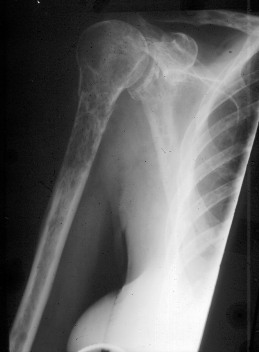The white blood cells which helps in identifying the germs attacking the body and which produces the corresponding antibodies are called as plasma cells. Cancer which affects these plasma cells is quite rare and is called as multiple myeloma. In this case of cancer, the plasma cells are unable to fight off infections. Later, these cancerous plasma cells affect the bone marrow, replacing the healthy cells. They then start producing harmful proteins instead of antibodies. These by-products can affect the kidney functioning and cause other worse symptoms. If your doctor are suspecting you have this kind of problem, multiple myeloma diagnosis as soon as possible is required.
Multiple Myeloma Diagnosis
 The goal for multiple myeloma diagnosis is to determine its severity and how much it has spread, to check the progress of the illness, to keep track of any complications if they arise and check how effective the course of treatment is. A single test cannot help in multiple myeloma diagnosis; instead, a combination of various factors is used. These include medical history, lab test, physical examination and imaging tests.
The goal for multiple myeloma diagnosis is to determine its severity and how much it has spread, to check the progress of the illness, to keep track of any complications if they arise and check how effective the course of treatment is. A single test cannot help in multiple myeloma diagnosis; instead, a combination of various factors is used. These include medical history, lab test, physical examination and imaging tests.
1. Blood and Urine Tests
The myeloma cells secrete "M protein" which is an antibody monoclonal immunoglobulin. The presence and amount of this protein in the urine and blood are used to diagnose the extent of myeloma and also for the treatment effectiveness. To measure the quantity of M protein in blood and urine, electrophoresis test is done. It also helps in checking the effectiveness of treatment and disease progression.
A quantitative immunoglobulin test will help in finding the amount of normal antibodies in the blood. Some of the immunoglobulins are IgG, IgA and IgM, the levels of which go down, while M protein levels are high. When the myeloma cells secrete only part of the antibodies, it is called as light chain. A serum free light chain assay can help in determining the level of free light chains.
The stage of cancer is determined by testing the serum levels of albumin and another protein known as beta 2-microglobulin. Kidney function test, serum calcium levels and RBC count for determining anemia are also done to help make sure the result.
2. Bone Marrow Aspiration and Biopsy
Both these tests are done for bone marrow examination. Since they are so similar, they are done at the same time. The liquid part of the bone marrow is removed by a bone marrow aspiration needle, whereas biopsy involves removing very small part of the solid part using needle. Both are essential for multiple myeloma diagnosis.
Samples are then analyzed by a pathologist and interpreted. Usually the procedure is performed in the pelvic bone, the area under lower back and near the hip. Anesthesia is used to numb the area and to block the pain as well.
3. Image Tests
Different types of image tests include X-ray, MRI, CT Scan, PET (positron emission tomography) scan and integrated PET-CT scan. Radiation is used in small amount to create images in X-rays and is usually the first step in multiple myeloma diagnosis. In a MRI, magnetic field is used instead of radiation. It can show up presence of myeloma cells in the spine, pelvis and skull. The images are detailed and help in determining tumor size as well.
CT scan takes cross sectional views which can show up abnormality in the soft tissues. These images can be used to create 3D images as well. In PET scan, a radioactive sugar substance is injected in the body and is taken up by the cancer cells. This is because they require lot of energy. Images are then taken by a scanner. Integrated PET-CT scan makes use of images generated by PET & CT scan at the same time. The images show details much clearer.
4. Fat Pad Aspirate
When M proteins get misfolded and deposited in the tissues, they can cause organ dysfunction. It is also called as amyloidosis. A biopsy of the abdominal fat is performed if there is any chance of amyloidosis suspected.
5. Molecular Testing of the Tumor
To determine testing options, molecular testing of the tumor is recommended. These tests will analyze tumor samples for identifying cytogenesis, genes, proteins or other factors which are unique to the tumor.
When you finish these tests, you can click HERE to compare your result with diagnostic criteria of multiple myeloma.
After Multiple Myeloma Diagnosis
Once the multiple myeloma diagnosis is done, the doctor will collate all the information available from the tests and classify it into the appropriate stage – 1, 2 or 3. When in Stage 1, the condition is less aggressive, while in stage 3, there is enough aggression to cause damage to kidneys, bones and other organs.
Based on the aggressiveness of the disease, there can be a risk category associated with it. Both these will help the doctor in understanding the prognosis and determining various treatment options available to you.
You can get better understanding about multiple myeloma by watching this interesting video:
